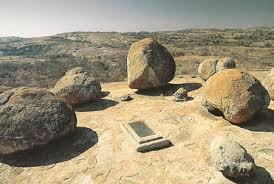BOOK IN OFFING
 |
| COMING SOON! |
THE
UNGA TRIBE OF BANGWEULU SWAMPS- MORE THAN JUST FISHERMEN
CONTENTS
CHAPTER 1: Origins and the founding of Lunga
CHAPTER 2: Chieftaincy and Succession Lineage
CHAPTER 3: Language, Culture and Tradition
CHAPTER 4: Fishing, Hunting as main occupation
CHAPTER 5: Wildlife, Traditional Ceremony & Tourism
CHAPTER 6: Food and Nutrition
CHAPTER 7: Social and Pastime activities
CHAPTER 8: Death and Superstition
CHAPTER 9: Politics and Development
CHAPTER 10: Unique Words, Adages and Idioms
____________________________________________
CHAPTER
1
INTRODUCTION
Within Bangweulu Wetlands
lies a vast 5,000 km2 swampy area called Lunga, which is home to over
50,000 indigenous Unga tribesmen. The name Lunga simply means to hunt and was derived
from the area’s suitability for hunting expeditions because of its abundant
wildlife.
Located in Luapula
province north-east of Zambia, Lunga is a cluster of islands and islets spaced
between 40km to 60km and surrounded by four neighbouring districts, i.e. Samfya
in Luapula, Mpika in Muchinga, Lavushi Manda in Central and Chilubi in Northern
province.
Lunga is therefore a
natural recipient of fresh water and other aquatic life from big rivers
Chambeshi, Lumbatwa, Lukulu and their tributaries plus terrestrial life from
Northern and central provinces. These rivers outflow into the famous Luapula
river that feeds Lake Bangweulu.
Lakes Bangweulu, Chale and other prominent
lagoons such as Nsawa, Kalungu, Nsundwa, Kabulya, Mwishiba, Nkutila, Mwitwa,
Kuyenge, Bembamatongo, Chisele and many rivers surround or flow through Lunga
swamps.
It is no wonder the swamps are home to more
than 86 fish species, 33 of which are commercially exploited. It is also estimated
that 30% of fish consumed on the Copperbelt and surrounding areas come from
Lunga.
Like all inhabitants of
Zambia, the Unga people migrated from Congo around 1700. From the ancestry of
Kasolwe Chabala which they share with Ng’umbo tribe, they initially settled in Chulung’oma
in Luwingu district.
It is said that one of Chabala’s adventurous grandson
and hunter Mwelwa Mfumu left Chulung’oma on some of his hunting expeditions and
discovered, among other places, perfect hunting islands at Ibinda later named
Ncheta island which is now capital of Bwalya Mponda chiefdom.
Here, he found the place was rich in wildlife
but with leached soil which was poorly arable to support meaningful agriculture,
it remains so to date. Subjective islands in the area under Bwalya Mponda
chiefdom today include Chafye with sub-chief Ponga, Mutapwe, Mbo Ya Lubambe and
Chibambo.
Mwelwa proceeded to discover more islands thus
Lunga, capital of Kasoma Lunga chiefdom which is also home to the newly
established district administrative office. Its two subjective inhabited
islands are Chisale which is under sub-chief Kambala and Chibulu.
He later found more
islands, now under Nsamba chiefdom namely; Nsalushi, Matongo the capital,
Mutwamina, Kabulu and Mandwe.
He finally settled at
Musumba, capital of Kalimankonde chiefdom, which literally means farmer of
dirges. Kalimankonde is a moniker given to the chief because his subjects could
not tend their gardens but instead attended incessant funerals of numerous
victims of typhoid believed to have been a spiritual curse for his willful disregard
of traditional practices.
Subjective islands to
Kalimankonde are Isenga with sub-chief Mweshi, Bucinda and Mung’omba with
sub-chief Milambo. Kalimankonde is to date recognized as the senior chief of
the Unga tribe.
As can be seen from this
brief history, Ba-Unga tribe are distinctively different from the Ba-Twa that
most historians refer to when they talk about the first settlers of Bangweulu
swamps. A few remnants of Ba-Twa tribe can still be found among the Unga
though, especially in Bwalya Mponda
chiefdom.
 SoundCloud
SoundCloud




Comments